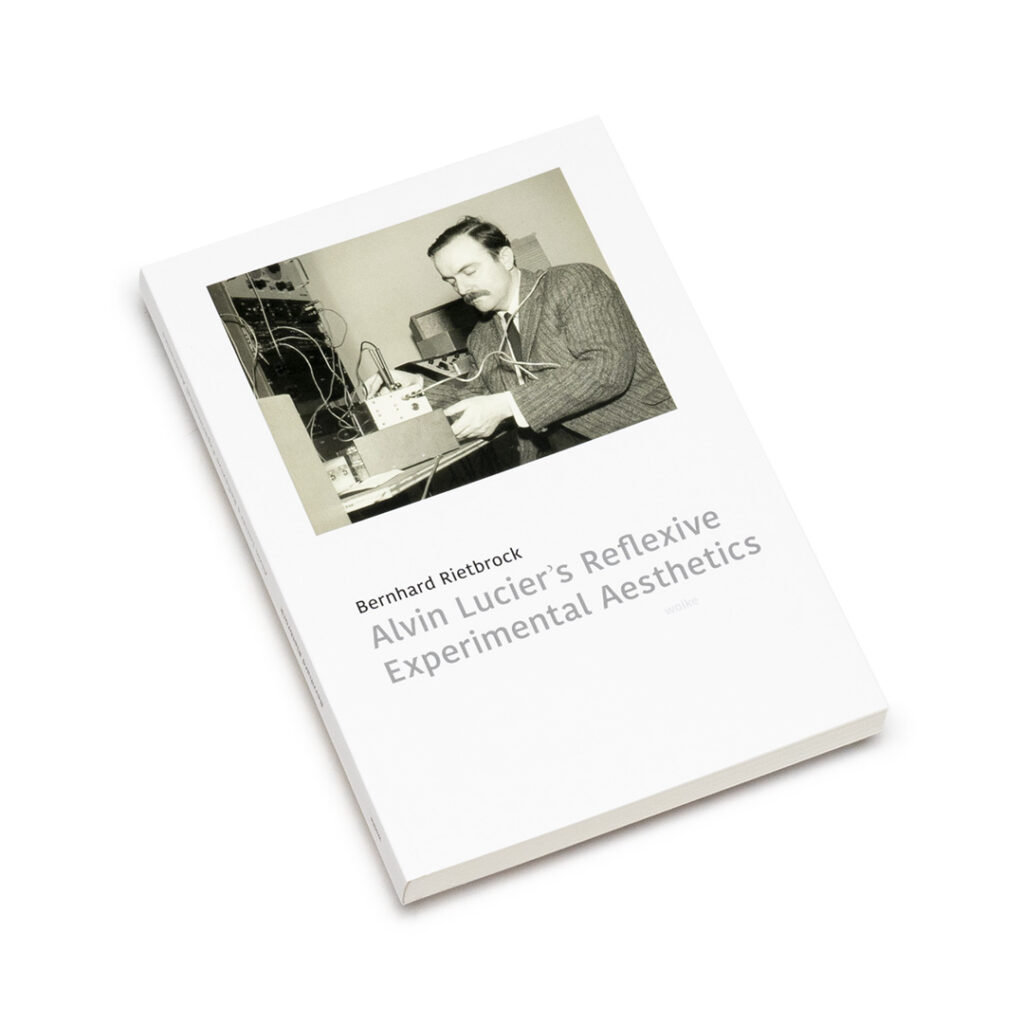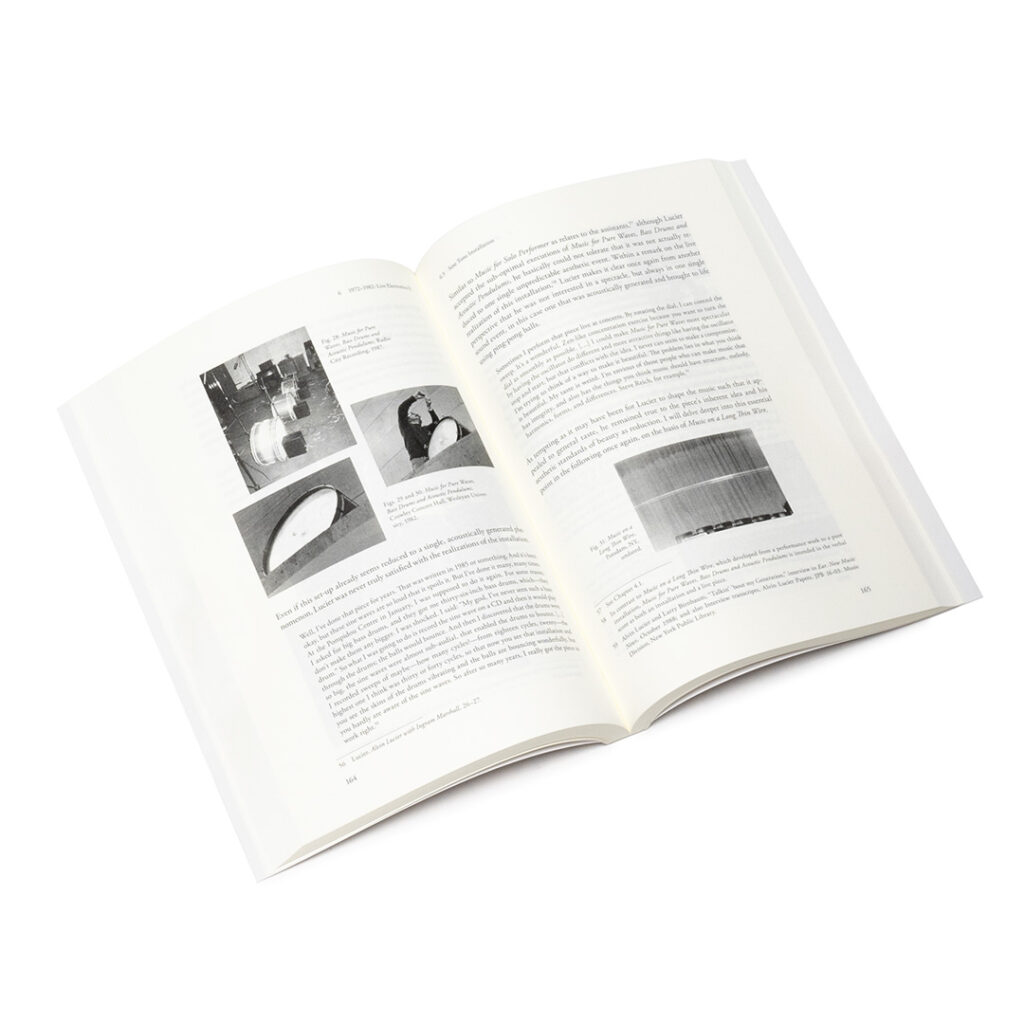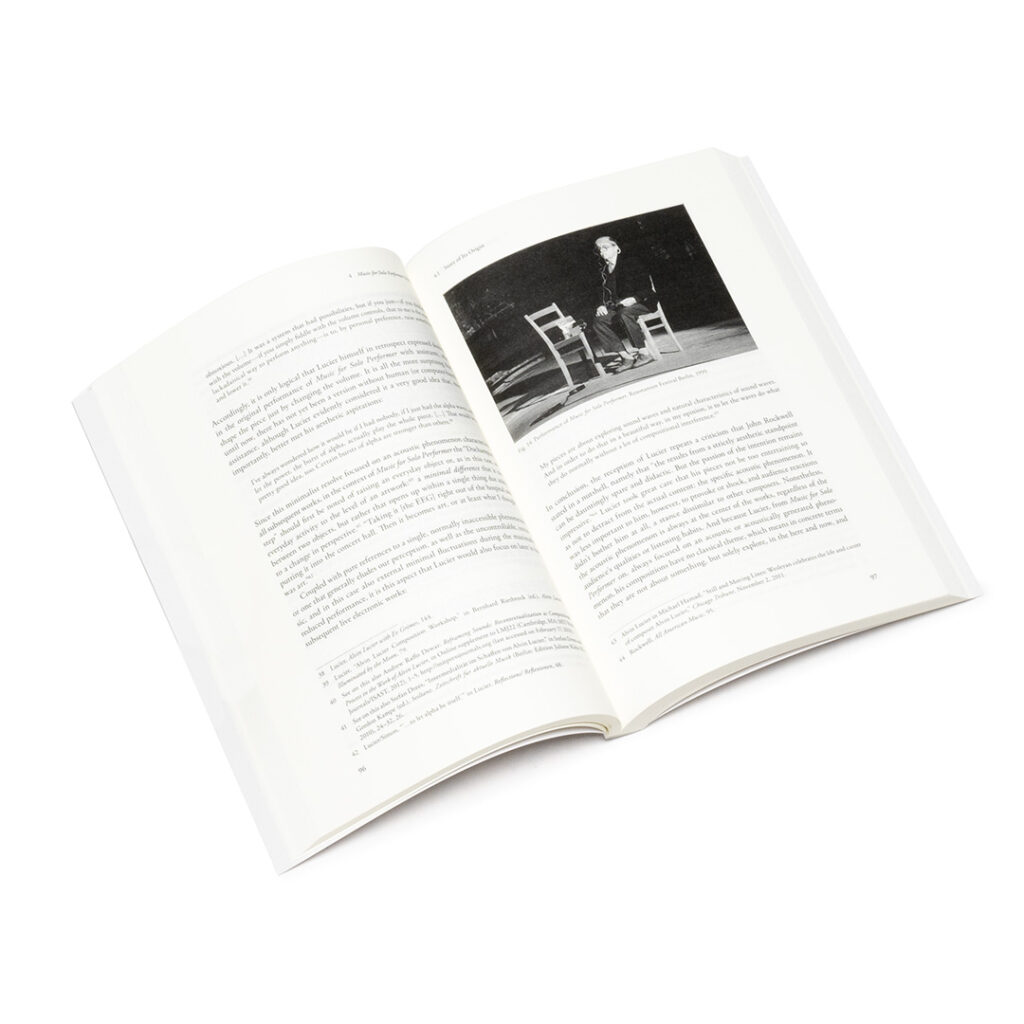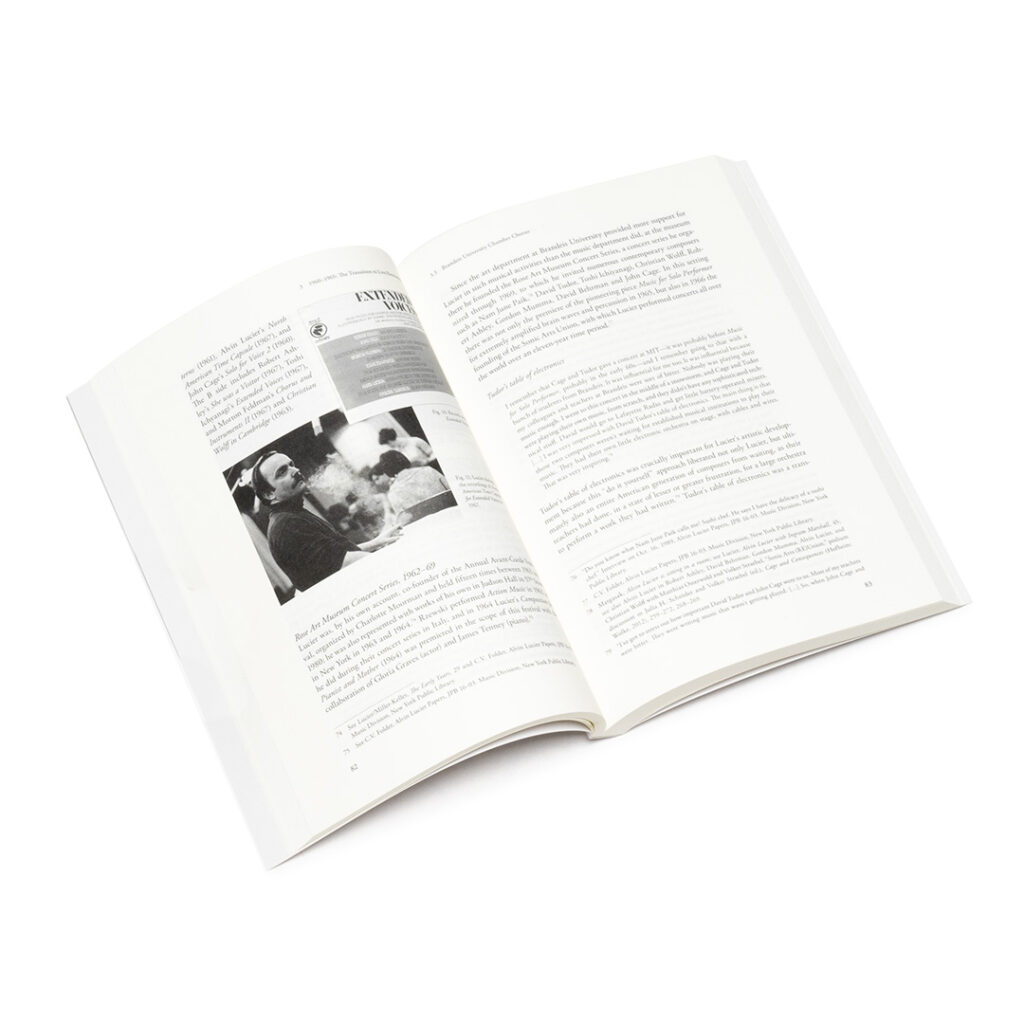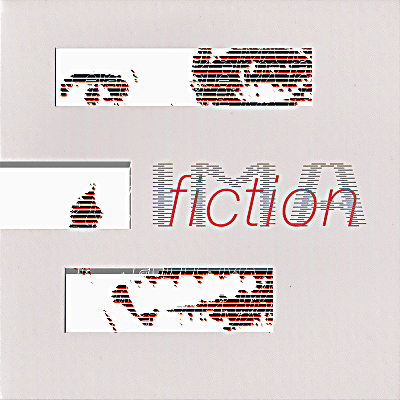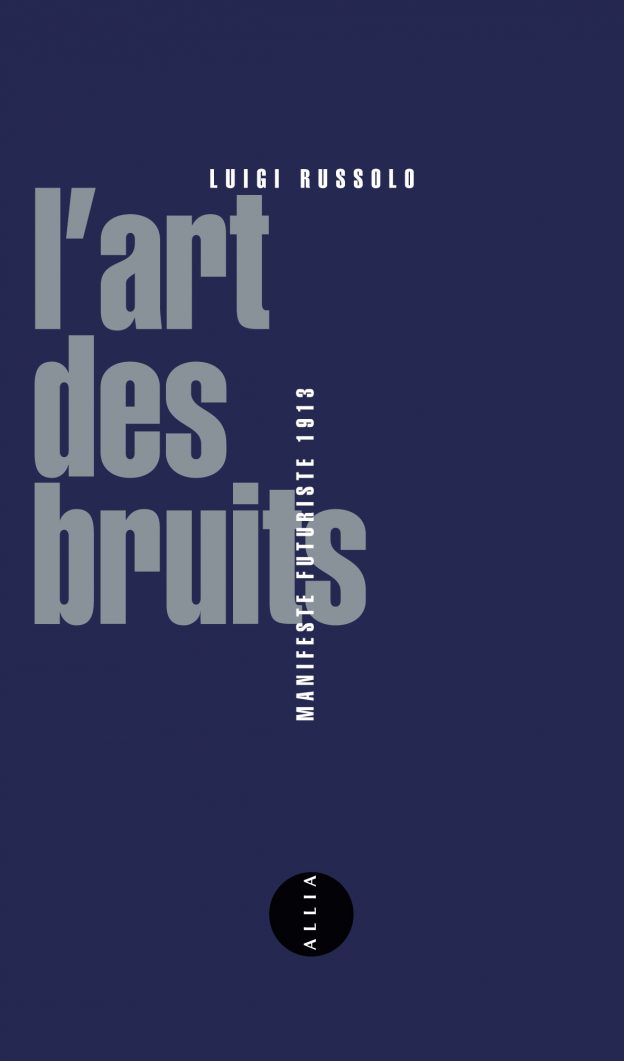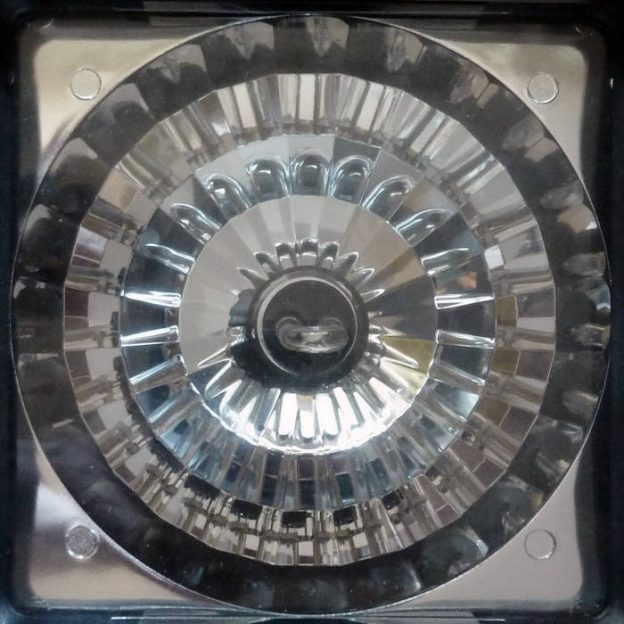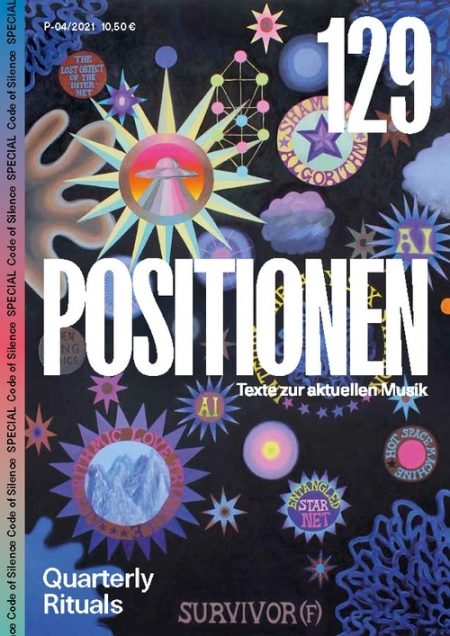Bernhard Rietbrock - Alvin Lucier’s Reflexive Experimental Aesthetics
Making audible what is usually inaudible, rendering sound visible in an unusual way, and facilitating a spatial experience of sound; this is what constitutes the pioneering work that makes Alvin Lucier one of the most important representatives of American music in the second half of the twentieth century. The stated aim of the study at hand is the detailed historical and theoretical exploration of Alvin Lucier’s work, with particular focus on his decidedly reflexive experimental aesthetics. The research is thus based on two essential methodological approaches: on the one hand, a musicological study of the genesis of Lucier’s work, and on the other, an aesthetic analysis of the role of the real within Lucier’s aesthetics.
Lucier’s experimental compositions are aesthetic reflections that are constantly making reference to the phenomenology of sound, as well as to the perception of perception itself. His aesthetic vision gravitated towards devising minimalist constellations and processes which, due to the withdrawal of the compositional subject, gave expression to an acoustic phenomenon and the unforeseeable idea inherent to it.
Dr. Bernhard Rietbrock studied Sound Studies at the University of the Arts in Berlin, where he also received his PhD at the Faculty of Music on the topic of Alvin Lucier’s Reflexive Experimental Aesthetics. In 2016, he founded the Ever Present Orchestra at the ZHdK as part of the research project Reflexive Experimental Aesthetics after Alvin Lucier, with which he has since given concerts worldwide as artistic director together with Alvin Lucier.
Paperback, published in 2022, 220 pages.
Table of Contents
Acknowledgements ……………………………………………………………………………………9
Introduction …………………………………………………………………………………………..13
American experimental music · Reflexive experimental aesthetics · Lucier and the real
· Methodology and approach · State of research · I Am Sitting in a Room (1970) · On
the reception of other works by Lucier · Summary of content
1 1931–1950: The Early Years …………………………………………………………………45
1.1 Parents and Childhood ……………………………………………………………….. 45
Music and the Lucier family · Refusal to play the piano · Drums
1.2 School and Music ………………………………………………………………………. 48
Jazz, school band and choir · Classical music · Experiences in the natural world
1.3 1949–1950: Preparatory School…………………………………………………….51
Portsmouth Abbey School
2 An aesthetic foundation ………………………………………………………………………55
2.1 1950–1954: Bachelor of Arts
Studying Composition at the College of Yale University …………………..55
Dropping out of law school after one semester
2.2 1954–1958: The Interim Years ……………………………………………………..60
1954–56: School of Music dropout · 1956–58: Jobs
2.3 1958–1960: Master’s Studies at Brandeis University and Attendance
at Tanglewood Music School ………………………………………………………..61
Brandeis University · Tanglewood Music Center
3 1960–1965: The Transition to Live Electronics ………………………………………. 65
3.1 Summer 1960 in Venice ……………………………………………………………… 65
Federico Ghedini, Luigi Nono and the Biennale · The John Cage Concert at
Teatro La Fenice, Venice, 1960
3.2 1960–1962: Rome …………………………………………………………………….. 70
Frederic Rzewski, Goffredo Petrassi and Boris Porena · David Tudor’s piano class
and concert, Darmstadt Summer Course, 1961 · Studio di Fonologia in Milan
3.2 Rupture, New Start and Interim Compositions………………………………. 75
Action Music (1962)
3.3 Brandeis University Chamber Chorus ……………………………………………. 78
Morton Feldman and Earle Brown concert at New York City Town Hall, 1963 ·
Extended Voices recordings, 1967 · Rose Art Museum Concert Series, 1962–1969
· Tudor’s table of electronics
4 Music for Solo Performer (1965) ……………………………………………………………. 87
4.1 Story of Its Origins …………………………………………………………………….. 87
Performance form · Premiere · Aesthetic consequences
4.2 Lucier and the Real …………………………………………………………………….98
Excursus: The real · Artist or scientist · Christian Scheib and the noise of the real
The postmodern real
5 1965–1972: Live Electronics I ……………………………………………………………. 111
5.1 Sonic Arts Union, 1966–1977 ……………………………………………………. 111
Sonic Arts Union concerts · Henri Pousseur, Liège · A scandalous concert in Zagreb
5.2 Works That Explore Natural or Architectural Spaces ………………………. 116
Vespers (1968) · Repercussions · Space as a real-time score and dealing with the
impossible · Chambers (1968)
5.3 I Am Sitting in a Room (1970)…………………………………………………….. 124
I Am Sitting in a Room and Steve Reich’s Come Out (1966) · Gradual processes,
American experimental music and the nature of things · The beauty of things · At
the boundaries of the symbolic · The insistent real · The real and the horror
5.4 North American Time Capsule (1967) …………………………………………… 138
Fragmentary de-symbolization
6 1972–1982: Live Electronics II ………………………………………………………….. 143
6.1 Aesthetic contextualization ……………………………………………………….. 143
Wesleyan University · The subtle difference from electronic music · Demarcation
from world music · Demarcation from Western avant-garde · The Ojai letter and
Pierre Boulez · Joan Peyser and Boulez
6.2 Sine Tone Compositions ……………………………………………………………. 156
Artistic focus · Forms of three-dimensionality of sound · Site-specific improvisa-
tion
6.3 Sine Tone Installations ……………………………………………………………… 163
Music for Pure Waves, Bass Drums and Acoustic Pendulums (1980) · Music
on a Long Thin Wire (1977) · Sound on Paper (1985) · Demarcation from Cage
6.4 The Passion for the Real ……………………………………………………………. 171
Cage and the passion for the real of purification · Feldman and the passion for
the real of subtraction · Lucier and the passion for the real of minimal difference
7 1982–2021: Instrumental Works………………………………………………………… 179
7.1 Second Turning Point ………………………………………………………………. 179
The notation of the beating · Crossings (1982–1984) · Panorama (1993) ·
Two Circles (2012) · Semicircle (2017) · Tilted Arc (2018) · Arrigoni Bridge (2019)
7.2 In Memoriam Jon Higgins (1984) ……………………………………………….. 207
In Memoriam Jon Higgins and the positive-medial real · Criss-Cross (2013) the
“Beating Microscope”
7.3 Consequences of the Passion for the Real of the Twentieth Century….. 212
The event as process · The price of the new · The negation of the negation · Summary
8 Table of Figures ………………………………………………………………………………. 227
9 Bibliography …………………………………………………………………………………… 229
10 Catalog of Works …………………………………………………………………………….. 241
11 Discography …………………………………………………………………………………… 271
€36.00


